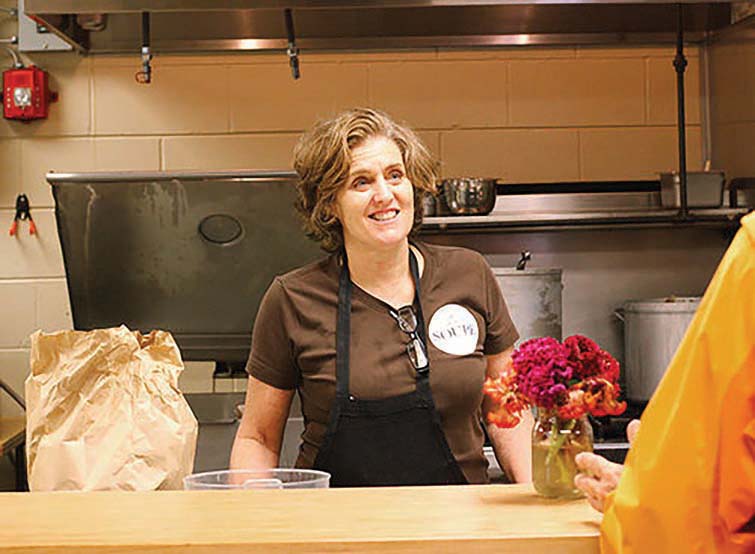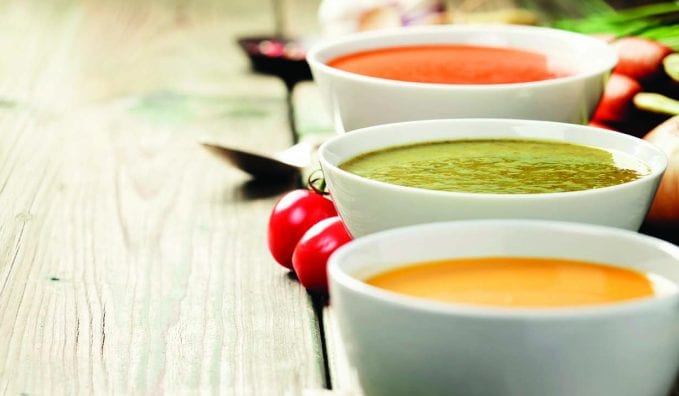Applications for Ohio Farm Bureau Health Plans now available
Members have three ways to apply: contacting a certified agent, calling 833-468-4280 or visiting ohiofarmbureauhealthplans.org.
Read MoreAs a chef, it’s not uncommon for Suzy DeYoung to make foods from scratch that others might pick up at the supermarket. While some of those items might be complicated or time-consuming—one stands out to her as a dish that everyone should make at home.
“Soup,” she said. “Of all the aisles I don’t understand at the grocery store, the soup aisle is the worst.”
Homemade soup prepared with fresh or frozen ingredients tastes way better than anything that comes out of a can and it’s simple to do, said the founder of La Soupe. The Cincinnati nonprofit organization salvages produce and other foodstuffs that groceries are disposing and uses them to create soup and meals for people in need. The organization serves about 3,000 meals a week.
“It’s easy to make and it tastes so good,” DeYoung said.
Soup recipes generally don’t require a lot of complicated steps and the results are usually delicious, agreed Dave Brue, culinary educator at the Ohio State University Wexner Medical Center. “Often, it’s a matter of putting all of the ingredients in a pot and letting it go,” he said.
Even the most novice cook can handle homemade soup, Brue said. “The great thing about soup is it’s so forgiving.”
And having all the ingredients the recipe calls for is optional too. “With soup, recipes are just guidelines,” he said.

He and DeYoung suggest starting with what you have on hand and building a recipe around that. They also are huge proponents of freezing vegetables that are about to spoil and leftovers from your evening meal and throwing them into the soup pot.
DeYoung’s love of homemade soup began when she was a child visiting relatives in France. Her aunt would take the leftovers from the family’s noon meal and blend it into soup. “That was the dinner,” she said. “She took whatever we had – roasted vegetables or meat and would puree it into a lovey soup.”
Soup itself also freezes nicely, said Pat Brinkman, an associate professor and Extension educator for Ohio State University’s Fayette County Extension office. Consider making a double batch and freezing some for another meal, she said.
Soup is a go-to for Brue at work and at home in the winter because it’s warm and hearty. It makes a filling meal, he said. “There are so many vegetables and nutrients that you can pack into soup that you can’t get in other meals,” he said.
While the vegetables contribute to a soup’s nutritional value, it’s important to look at the health value of the other ingredients, Brinkman said. Consider substituting heavy cream with milk or even evaporated skim milk for a healthier version, she said. If a recipe calls for sautéing vegetables in butter before adding the stock, try using olive oil to reduce the fat content of the dish. She recommends trying to reduce the salt content as well.
“Try to cut back on salt by adding more herbs and spices,” she said. “Taste it before you start thinking you need to add salt.”
Ideas for making soup healthier:


Members have three ways to apply: contacting a certified agent, calling 833-468-4280 or visiting ohiofarmbureauhealthplans.org.
Read More

One of the best decisions Shannon and Heather Utter made a few years ago was looking into a Farm Bureau member benefit that has ended up saving them thousands of dollars on their energy bills.
Read More

Ryan Hiser has experienced first-hand the importance of having the opportunity to vote on issues that will affect his family operation and other farmers.
Read More

Bill Patterson, Cy Prettyman and Adele Flynn will continue to serve as officers for Ohio Farm Bureau Federation.
Read More

Delegates discussed many topics impacting agriculture including farmland preservation, local foods, and succession planning.
Read More

Twenty-six farmers govern the state’s largest farm and food organization.
Read More

The 2025 recipients are Fred Cooke (posthumous) of Richland County, Marvin Dietsch of Williams County, Steven Knollman of Hamilton County and Michele Miller (posthumous) of Ottawa County.
Read More

Nathan and Jill Parriman grow seasonal crops, including Christmas trees, pumpkins and cut flowers, providing U-cut experiences that invite customers to engage directly with agriculture.
Read More

The 2025 Distinguished Service Award recipients are Craig Adams, Mike Townsley, and Kellogg Farms, Kurt Farms and Stateler Family Farms.
Read More

Ohio Farm Bureau Treasurer Adele Flynn participated in the meeting, representing Ohio farmers.
Read More